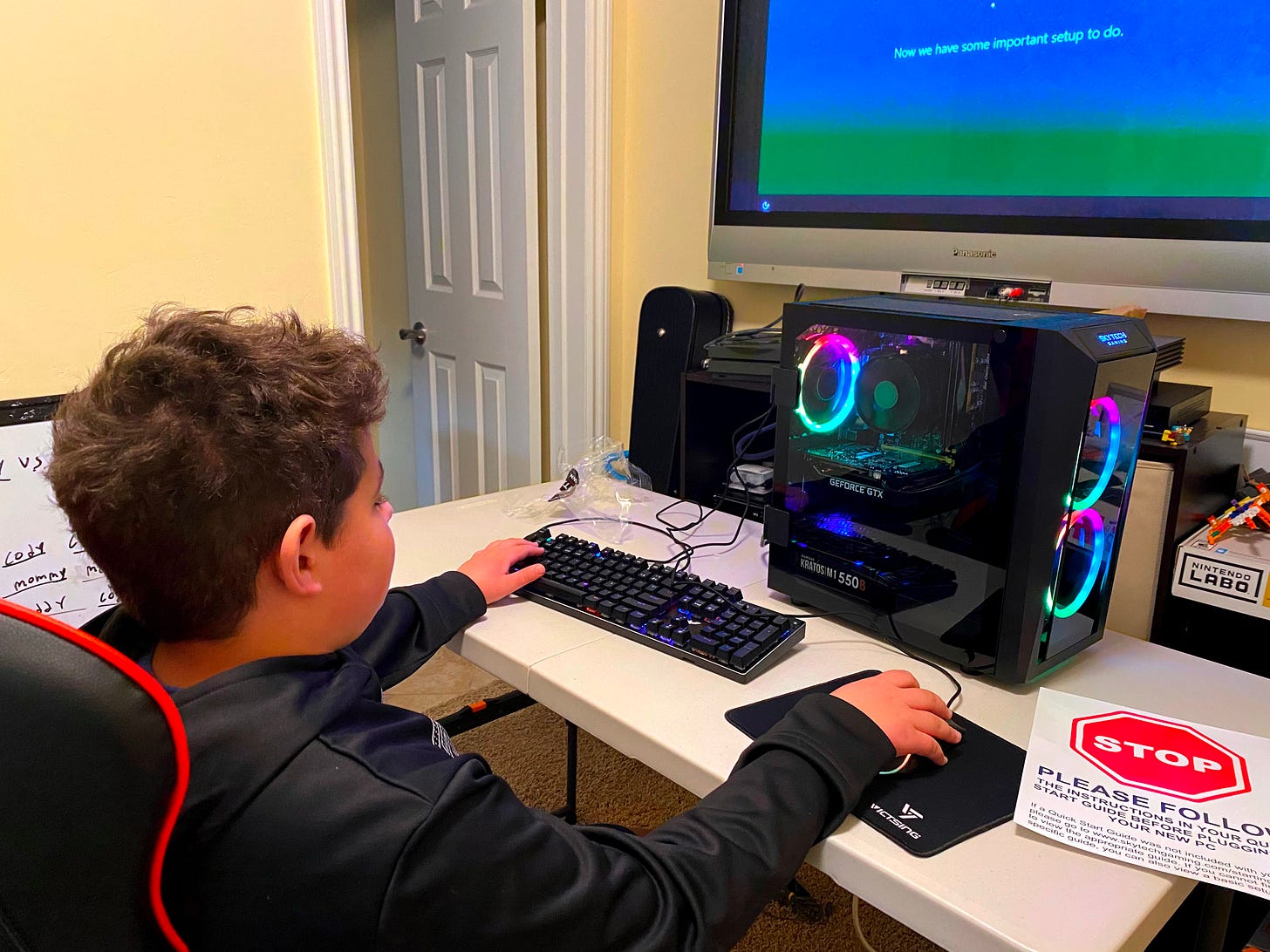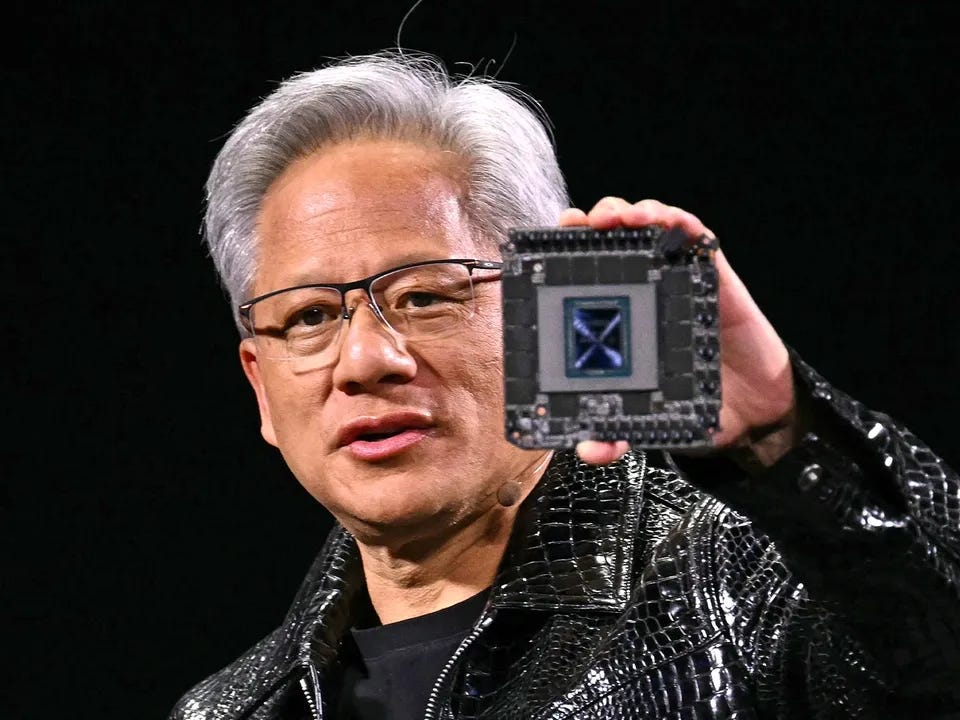How Nvidia Defied Leadership Logic to Build a $3 Trillion Giant
The Nvidia way works—but can it last?
It’s been a while since I’ve taken a deep dive into a specific company in The Leadership Corner. When I first started this series, my focus was on breaking down the leadership styles of select founders through the lens of the GrowUp framework. Given Nvidia's impact on AI, it felt like the right time to return to those roots and explore what has made them so successful.
I should note upfront—I work for a technology company powered by AI, not a hardware company. This isn’t my area of expertise. But I’m incredibly thankful for what Nvidia has produced because it powers so much of what’s possible today—including all the gaming my son does, which I suppose I should be both grateful for and slightly concerned about.
Despite its influence, I don’t think most people fully appreciate how incredible the Nvidia story is or how they got to where they are.
Nvidia’s rise from a scrappy startup to the undisputed leader in AI and accelerated computing is a masterclass in leadership—not because they followed conventional wisdom, but because they broke it. The company was founded in 1993 by Jensen Huang (CEO), Chris Malachowsky, and Curtis Priem with a vision to standardize 3D graphics for gaming and multimedia. They entered a brutal semiconductor industry where dozens of competitors failed, but Nvidia survived—barely.
One of the key reasons for their survival? Jensen Huang always looked ahead to where there was no competition yet. While other companies focused on immediate market battles, Huang positioned Nvidia near industries that hadn’t yet emerged, ensuring they were ready when the opportunity arrived. He believed that if you want to be first to pick up the apple when it falls from the tree, you don’t wait under it—you position yourself nearby, watching for the right moment.
In its early years, Nvidia came close to failure multiple times. A misalignment with Microsoft’s Direct3D standard, an unexpected drop in memory prices that hurt their competitive edge, and a near-bankruptcy forced Huang to lay off 70% of the company. With just 35 employees left, they bet everything on executing faster than anyone else. In 1997, they accomplished the impossible—while competitors took 12 to 18 months to develop a new chip, Nvidia designed, tested, and launched the RIVA 128 graphics card in just six months. To accelerate the process, they bypassed traditional prototyping and went straight to manufacturing, an incredibly risky move that could have bankrupted them if the chip failed. Instead, the RIVA 128 became a massive success, selling a million units in 12 months. That ability to move faster than the competition—without sacrificing vision—became the company’s defining strength and set a new standard for rapid innovation in the industry.
By 1999, they had rebranded their products under GeForce and coined the term Graphics Processing Unit (GPU). That was just the beginning. When gaming wasn’t enough, they bet on AI before the rest of the world caught on. Their CUDA platform, launched in 2006, turned GPUs into computing engines for scientific research and, later, deep learning—an industry-defining moment. Nvidia didn't wait for the AI revolution; they built the infrastructure for it before anyone realized they needed it.
Huang has shared key leadership insights over the years that reveal why Nvidia continues to stay ahead:
Anticipate markets before they exist: Don’t chase competition—position yourself where the demand will be in five to ten years.
Relentlessly reinvent: If you’re not constantly evolving, you’re dying at the rate of Moore’s Law.
Be willing to disrupt yourself: Holding on to legacy strategies kills innovation faster than failure.
Create moats through ecosystems: CUDA wasn’t just a software bet—it was a way to make Nvidia’s GPUs indispensable to entire industries.
These principles don’t just apply to Nvidia’s products—they define how the company itself operates. Most successful startups follow a familiar formula: an Innovator who has the vision, a Builder who is the technical expert, a business-savvy Connector who builds relationships and expands influence, and a Persuader who secures partnerships. Apple had Mike Markkula. Microsoft had Steve Ballmer. Google had Eric Schmidt. Nvidia? They did it differently. They relied on pure execution, relentless reinvention, and an unorthodox organizational structure. It worked—but not without tradeoffs.
The Superpowers That Made Nvidia Work
Nvidia’s founding team leaned heavily on Innovation and Building.
Jensen Huang – Relentless Innovator (Reluctant Persuader): Jensen is the visionary who never stops reinventing Nvidia. He bets big, moves fast, and refuses to let the company become stagnant. While he grew into a Persuader over time, he started as an engineer obsessed with execution.
Chris Malachowsky – Builder: Malachowsky focused on engineering operations, ensuring that Nvidia’s development cycles were faster than anyone else’s.
Curtis Priem – Innovator: Priem’s technical acumen helped Nvidia set new standards in graphics processing, laying the foundation for the company’s dominance.
With no traditional Connector, Nvidia had to organize differently to make up for this gap.
The Leadership Model That Defies Convention
Nvidia’s internal structure is not built like a typical corporate hierarchy. Instead, it functions like a computing stack—where expertise, not titles, dictate decision-making.
Flat, but Not in the Way You Think: Nvidia doesn’t have traditional layers of management dictating strategy. At any given time, Huang could have 60+ direct reports, an intentional decision to eliminate unnecessary bureaucracy and ensure that domain experts have direct access to leadership. Instead of relying on middle management, whoever is the best at a particular domain leads that domain. This structure forces leaders to stay close to the technology and enables faster decision-making
Mission Over Management: In most companies, the org chart dictates how work flows. At Nvidia, missions dictates the org chart. Huang has said, “What are we trying to build? And what architecture do we need to build that?” The structure changes depending on the project, rather than forcing every initiative into the same reporting lines. However, this isn’t about an inspiring company mission in the traditional sense—it’s about execution of particular initiatives. Employees may feel deeply aligned with the company’s technical goals, but they are not necessarily connected to a broader purpose beyond performance.
High Pressure, High Transparency: Nvidia’s leadership doesn’t shelter its employees from harsh realities. When the company was nine months from bankruptcy, Huang laid off 70% of the team and made it clear: “We design and ship before anyone else, or we die.” The entire company knew the stakes. Today, this culture remains—decisions are made fast, and everyone in the room hears the same information at the same time.
The Tradeoffs of Nvidia’s Leadership Model
Nvidia’s approach has propelled it to industry dominance, but it also comes with tradeoffs:
Extreme Execution Pressure: The high-stakes, execution-first approach has made Nvidia a juggernaut, but it also means fewer soft landings for employees and intense pressure to perform.
Jensen Huang as the Single Point of Influence: Nvidia’s external relationships, partnerships, and industry positioning have largely depended on Huang’s vision and leadership. Without a leadership team that naturally cultivates external influence, Nvidia may struggle with succession planning.
Lack of Internal Connection and Cultural Engagement: While Nvidia excels at execution, its culture is not built around creating strong internal connections or a shared sense of inspiration. Employees are expected to be initiative-driven in terms of work output, but without a unifying Connector figure fostering engagement and belonging, long-term retention and morale could become vulnerabilities.
The Nvidia Way Works—But Can It Last?
Nvidia should have died at least four times. Instead, it’s now worth close to $3 trillion and growing. But what happens next? As Nvidia moves deeper into AI, cloud computing, and enterprise relationships, will its execution-first culture be enough? Or will the next stage of its dominance require a different kind of leadership?
For leaders everywhere, Nvidia offers both inspiration and a challenge: Defy leadership conventions—but know what you might be missing.
To learn more about my GrowUp framework and how it can help grow your leadership style visit: Michelledenogean.com






